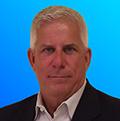
It seems there is little or no regard for the people living south of Lake Okeechobee.
Some activists, in addition to making us the scapegoat for nearly all of the water problems facing South Florida, have resorted to mocking Glades citizens for being "backwards," living in "homes on wheels," and calling us "those people." Our attempts to speak up for ourselves are ridiculed by our more affluent neighbors on the coast.
Despite these attempts to paint us as poor, uneducated and unsuccessful -- and even one suggestion that a breach in the Herbert Hoover Dike would put us out of our misery -- there is a lot the Treasure Coast can learn from us here in the Glades.
Over 40 years ago the cities here in the Glades converted to centralized sewer systems. Because of this commitment to our environment, we have partnered with both the South Florida Water Management District and Palm Beach County to continue to remove all remaining septic tanks and connect everyone to modern centralized sewer systems. We are upgrading our storm water collection systems as well.
Palm Beach County and Hendry County have invested heavily in our infrastructure and we are justifiably proud of these accomplishments.
The results of these partnerships have greatly reduced the number of septic tanks in our region and produced cleaner surface water -- a real benefit to the environment. If these policies were implemented along the Treasure Coast, I guarantee those folks would make a significant cut in the pollution contributing to water quality problems like toxic blue-green algae that hit the Treasure Coast this summer.
For all of the hysteria blaming the sugar cane farmers south of the lake for the pollution, claims not supported by science. Our region has not experienced the stinking, thick, toxic blue-green algae seen on the Treasure Coast and we received discharges as well. In fact, our farmers made sure that 90 percent of that water met the government-mandated 10 ppb standard for phosphorus.
Back in 1970 there were fewer than 75,000 septic tanks in the counties along the Indian River Lagoon. Today, Volusia, Brevard, Indian River, St. Lucie and Martin have more than 300,000 documented septic tanks. This, according to the Florida Department of Health. It is no coincidence that Treasure Coast water quality is getting worse with this growing number of septic tanks -- most of which are not inspected or properly maintained.
A 2015 study by Harbor Branch Oceanographic Institute found that the septic systems located along the Indian River Lagoon are the LEADING source of pollution and dump 4.4 million pounds of nitrogen into the lagoon each year.
The Florida Department of Health in Martin County has observed high levels of enteric bacteria on several occasions this year, warning residents to avoid the water near the Roosevelt Bridge in Stuart and Leighton Park by the Palm City Bridge. We all know that enteric bacteria lives in the intestinal tract of humans and animals and finding it in the water proves it's FECAL pollution.
Even if you add the Lake Okeechobee discharges, local basin run off still accounts for 87 percent of the total phosphorus load to the St. Lucie estuary, according to the South Florida water Management District.
While some pseudo-environmental groups continue to work overtime falsely blaming farmers south of the lake for water quality problems closer to the northern end of the lake, our residents have been taking meaningful and documented steps to improve the water quality in our region. we have given up more than 120,000 acres of productive farm land for water storage and treatment, spent over $400 million of our hard earned money on cleanup programs like best management practices (BMPs) and removed septic tanks to reduce ground water pollution.
We can support these accomplishments on cleaning up our backyard with solid facts and figures. It is past time for the coastal communities to clean up their backyards.
J.P. Sasser is a former mayor of the City of Pahokee.


